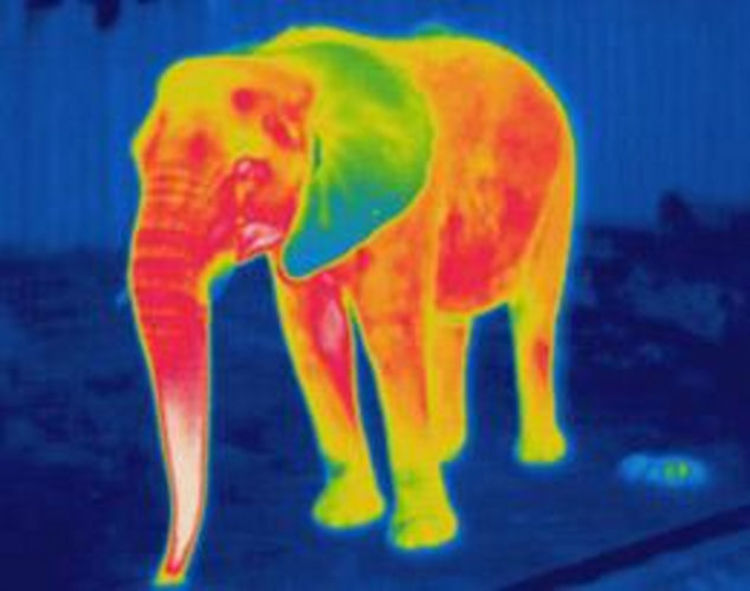A trip to the spherical jungle
 All creatures must eat to survive, but some eat much more than do others. The pygmy falcon for instance eats as much as twice its body mass in food, every day! How can we estimate these intakes from first principles? A surprising amount can be explained by the energy to offset heat loss.
All creatures must eat to survive, but some eat much more than do others. The pygmy falcon for instance eats as much as twice its body mass in food, every day! How can we estimate these intakes from first principles? A surprising amount can be explained by the energy to offset heat loss.
Suppose that a mouse and an elephant have identical body temperatures, and that they radiate heat. Furthermore, suppose that the mouse and elephant eat the same kind of food. If the mouse eats 10 g of food per day, how much does the elephant eat (in kg)?
Details
- Assume that the only purpose of eating food is to balance heat loss
- The mouse weighs 20 g, the elephant weighs 12,500 kg, and their bodies have the same density
- For simplicity, assume the mouse and elephant to have spherical bodies
The answer is 73.1.
This section requires Javascript.
You are seeing this because something didn't load right. We suggest you, (a) try
refreshing the page, (b) enabling javascript if it is disabled on your browser and,
finally, (c)
loading the
non-javascript version of this page
. We're sorry about the hassle.
Rate of Radiated Energy is directly proportional to the surface Area of the radiator.
These are the equations required: 3 4 π r 1 3 = ρ 2 0 3 4 π r 2 3 = ρ 1 2 5 0 0 0 0 0 4 K π r 1 2 D − 1 = 1 0 4 K π r 2 2 D − 1 = x
Solve them for x. x is the elephants daily intake in grams.